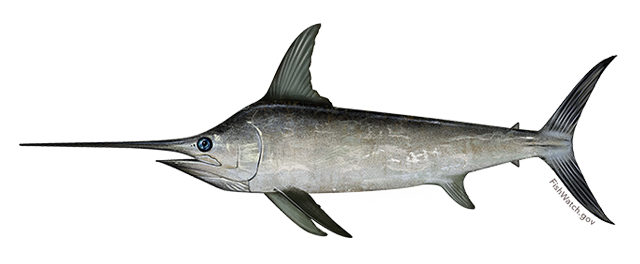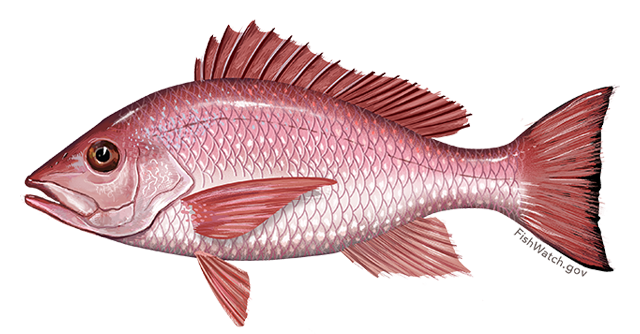Part 11: Limited Access Fisheries
Why Do We Have Limited Entry (Limited Access) Fisheries?
Managed fisheries balance two interests: the demand to catch fish vs. maintaining a perpetual supply of fish. As a result of fishery management, not everyone gets to catch as much fish as they want, but the overall economic sustainability in the area benefits. Historically, most U.S. fisheries were open-entry or open-access fisheries, meaning anyone who could afford a boat and the equipment could pursue a living by fishing. The better fishers with better gear caught more fish, made more money, and stayed in the fishery. Less successful ones dropped out.
However, the long-term trend is that more fishers are entering a fishery than the resource can support. This shortage becomes obvious when fishery biologists determine that the boats in the fishery are capable of catching far more than the total allowable catch for a sustainable fishery. In economic terms, that is known as overcapitalization. One problem from overcapitalization is that the component of the fishery that gets first dibs at the fish (for example the offshore component for groundfish in Alaska) will leave no fish for the other component (in that case the inshore groundfish component). The goal under the MSA is to manage the resources so the most people can benefit.
When no boats leave the fishery (which is a way of saying they quit fishing) and everyone fishes with the same effort as they always have, there are two consequences. First, there will be fewer fish available per boat on average. Second, the total allowable catch (TAC) will be reached quickly as all the fishers will be trying to catch as much as they can, as quickly as possible, before the quota is reached. This is known as “derby fishing” (rushing to harvest).
One problem with derby fishing is that it can create a temporary market glut, forcing prices lower, ultimately harming fishers. It also creates longer term supply problems for the buyers. Additionally, derby fishing may lead to a higher rate of bycatch and “ghost fishing” (where fish are killed by lost or abandoned gear) because crews are using as much gear as they can to catch as many fish as soon as possible, i.e. not fishing efficiently.
A third problem arises when a fishery makes severe reductions in the TAC in order to rebuild the stocks. During the rebuilding period, some fishers will leave the fishery while others will stick with it despite the low quotas. If the management scheme is successful, the TAC will be raised when the stocks recover. Fishers who stayed with the fishery now can reap the results of their sacrifices – higher quotas. However, in an open access fishery, anyone can join the fishery at any time and take advantage of the higher quotas. More fishers will join (or rejoin) the fishery to take advantage of the recovered stock. This means that while more fish will be caught, the amount per boat may remain the same, yielding no reward to those who stayed in during the lean times.
These problems can be reduced if the number of fishers is more in line with the amount of fish available for harvest. One way to do that is to limit the entry to a fishery. This goes against the grain of the longstanding tradition of open fisheries, yet it is being implemented in many commercial fisheries in the United States. It is an authorized management practice under the 2007 amendments to the MSA, which describe the system as a limited access privilege program (LAPP).
The concept of limited entry has less to do with fishery biology and more to do with trying to give each fisher the opportunity to earn a decent living in the face of limited stocks. It is a way to deal with overcapitalization in a fishery. However, limited entry cannot guarantee that fishers will become wealthy or that all of them will be treated fairly. Another issue with limited entry systems is that it is hard for a new fisher to join. This is because, for the most part, the quotas typically are based on how much that operator has caught over a certain number of years, data a new fisher cannot supply. Congress addressed this in the 2007 amendments to the MSA, 16 U.S.C. § 1853a(c)(5)(C), by requiring FMPs to consider initial allocation of individual fishing quotas for entry-level fishers and small vessel owners.
Some other ways to limit entry aside from an LAPP are to limit the number of licenses, restrict the days at sea, employ fishery sectors, designate special access programs, and issue individual fishing quotas or community development quotas.
Economic Issues Related to Open Access Fisheries (7 mins)
Limited Access Gives Individual Fishing Quotas
There are many forms of limited entry but two basic systems are common. These are Individual Fishing Quotas (IFQs) and license limitations. The term, individual transferable quotas (ITQs), is also used, but it is just another term for an IFQ. Under the MSA, IFQs “or other limited access system authorization” are treated as permits under the MSA, and may be revoked or limited, and do not create “any right, title, or interest in or to any fish before the fish is harvested.” 16 U.S.C. § 1853a(b). This puts to rest potential claims that if the government withdraws or reduces IFQs amounts it owes money to the quota-holder.
No Property Right in a Permit
Courts have held that fishing licenses and permits do not function as property protected by the Fifth Amendment Takings Clause. See, e.g. American Pelagic Fishing Co., LP v. United States, 379 F.3d 1363 (Fed. Cir. 2004) (mackerel and herring). Conti v. United States, 291 F.3d 1334, 41 (Fed. Cir. 2002) (ban on drift gillnet swordfish permit not a taking) cert. denied, 537 U.S. 1112 (2003); General Category Scallop Fishermen v. Secretary of the U.S. Department of Commerce, 720 F. Supp. 2d 564 (D.N.J. 2010) (change from scallop permit to IFQs not a taking) aff’d on other grounds (3d Cir. 2011). One court described the permits not as a property right but as “one measurement of current investment and recent participation in, and dependence upon, the fishery.” Pacific Dawn LLC v. Pritzker, 2013 WL 6354421, *10 (N.D. Cal. Dec. 5, 2013).
 North Pacific Swordfish
North Pacific Swordfish
One potential problem with a tradable quota system is that all the fishing rights could end up in the hands of the few operations that can afford to buy quota shares. This could lead to localized overfishing, where the few licensed vessels would harvest from a limited geographical area, in contrast to where there are vessels all over a region making smaller harvests. For how an FMP may address this potential problem, see the Alaska Halibut and sablefish discussion.
Alaska Halibut and Sablefish
In 1993 NMFS created an individualized fishing quota for Pacific halibut and sablefish for the Alaska region but put limits on the transfers. According to NMFS in the notice about limiting transfers, "Unconstrained transferability could lead to an excessive share of harvesting privileges being held by a single individual or corporation.” 57 Fed. Reg. 57130, 57136 (Dec. 3, 1992) To prevent the problem, NMFS required that the quota shares must be kept in the same regulatory area and transfers could be made only between the same category of catcher vessels. In 2013 the Pacific FMP took another look at the quota share system to ensure that owner-operators in the communities were doing the fishing. 78 Fed. Reg. 24707 (May 28, 2013). Fairweather Fish, Inc. v. Pritzker, 155 F. Supp. 3d 1136 (W.D. Wash. 2016).
 Pacific Halibut
Pacific Halibut
IFQs
An Individual Fishing Quota (IFQ) is a method to divide fish among fishing interests developed by NMFS following the Reauthorization Act (see 50 C.F.R. § 253.10, § 660.111). Instead of limiting the number of people fishing, as license limitations do, an IFQ limits the amount of fish that may be caught per fisher.
An IFQ authorizes certain quantities of commercial harvests from a fishery over a certain time period, typically per year or per season. The IFQ represents a percentage of the “share” of the total allowable catch (TAC), and those with IFQ rights are referred to as shareholders. Typically the share is based on a permit holder’s historic landings from that fishery. Shareholders are allowed to sell or transfer the shares. Fishers can increase their share of the catch by buying or leasing IFQs from others, and shareholders can be bought out if they want to leave the fishery.
As with license limitations, the major issue with IFQs is fairness. Someone must decide who gets the ITQs and how many shares of the total allowable catch each fisher is allowed. Because the shares are based on historical harvests, and there are seldom unclaimed shares available, it is difficult for new fishers to enter a fishery. For example, when IFQs were issued in 2007 for Gulf red snapper, they were based on landing history from 1999 to 2004, dropping one year. In that case, only those who had been fishing for almost ten years would be able to show eligible harvests in order to establish a quota-share.
With permission to harvest fish under an IFQ comes some responsibility. For example, the IFQ program for Gulf red snapper requires shareholders to set up an IFQ account online, receive permit information online, and return inactivated IFQ shares permanently to NMFS. (50 C.F.R. § 622.21(a).) In 2018 NMFS announced it would take back non-activated IFQ shares for Gulf red snapper from the 81 businesses that held them but were not using them. As the MSA makes clear, there is no right of compensation available for revocation, limitation, or modification of an IFQ.
 Red Snapper
Red Snapper
Limited Access Privilege Program (LAPP)
Congress established the Limited Access Privilege Program (LAPP) in the amendments to the Magnuson-Stevens Act in 2007, making rules for quota systems for fisheries. This was not the first limited access fishery management, but it was the first time Congress spoke directly to the issue. Under 16 U.S.C. § 1853a, a limited access privilege program allows only the recipient of a permit to catch fish. These programs are not popular with many fishers. They are seen as the government stepping in and controlling a resource that used to be available to everybody. On the other hand, a LAPP would not be necessary if there were enough fish in the sea for everybody to catch all they wanted.
The LAPP had limitations requiring approval of the affected fishing interests in specific cases. For example, Congress prevented the New England Council and the Gulf Council from creating individual fishing quota (IFQ) programs until existing permit holders approved the plan. A two-thirds vote of eligible permit holders was required for the New England Council to set up an IFQ. A simple majority (more than 50%) was needed in the Gulf. The Gulf votes were further limited by Congress, which said only participants who had “substantially fished the species” could vote in a referendum for multispecies permits (i.e. not the red snapper fishery, which Congress put a hold on for ten years under the SFA).
Substantially Fished
“Substantially fished” is not defined in the MSA, and Councils come up with different formulas to determine who may participate in a referendum based on their being able to demonstrate that they substantially fished in that fishery. For example, for the gray grouper and tilefish fishery in the Gulf of Mexico, the Gulf FMC required fishers to have participated in the fishery from 1999 to 2004 and to have an annual yield of 8,000 lbs. during that time. This left 70 percent of fishers unqualified for the referendum. A court found that setting those dates was reasonable because the eligible vessels landed the overwhelming majority of grouper and tilefish during the relevant period. Coastal Conservation Ass’n v. Locke, 2011 WL 4530631 (M.D. Fla. Aug. 16, 2011).
Under the LAPP, a permit is issued for no more than 10 years, although it can be renewed. The permits can be transferred or sold, and they may be forfeited if the permit holder violates the MSA.
Is the Program a LAPP?
The Northeast Multispecies Groundfish Fishery manages 13 fish species divided into 20 stocks. The fishery was overfished. For a decade a Days-at-Sea program was used, and then a sector program. Then an Amendment to the FMP changed the sector program, allocating shares to sector participants based on the ACL. Once the annual catch entitlement of the sector was met, the season was closed for that sector. Plaintiffs claimed this was a LAPP. The court found that there were no individual fishing quotas and therefore, it was not a LAPP. Lovgren v. Locke, 701 F.3d 5 (1st Cir. 2012).
Community Development Quotas in Alaska
Congress established a specific quota system for Alaska known as a community development quota (CDQ) (16 U.S.C. § 1855(i).) It gives a percentage of TAC to certain Alaska fisheries. (57 Fed. Reg. 54936 (Nov. 23, 1992)). While CDQs are a means of dividing limited resources based on TAC, the MSA excludes it from the definition of a limited access privilege. 16 U.S.C. § 1802(26).
License Limitations
Overfishing can also be addressed by limiting licenses. License limitations would seem to be a straightforward way to limit entry to a fishery. Under this approach, managers would decide how much fish could be caught and divide that amount by the size of harvest needed to provide an average fisher with a reasonable living. They would then issue only that number of fishing licenses (or permits). Only vessels with a license would be allowed to fish.
Unfortunately, most regulated fisheries already have too few fish to allow a reasonable living to each licensee. (Remember, only fisheries in need of conservation and management are regulated in the first place.) If licenses are handed out so that each holder is able to earn a reasonable living, fewer licenses would be available. That would leave some fishers stuck on land. Without enough licenses to go around, a Council must make decisions about who gets licenses. There are many ways to address these questions, but it usually comes down to perceptions of fairness. Some fishers may feel that they have been treated unfairly when licenses are limited. However, others see limited licensing as a way of allowing fishing to continue in the long-run.
Example of a License Program
To obtain a license for the Pacific cod in the Bering Sea and Aleutian Islands (BSAI) groundfish fishery, the license-applicant had to demonstrate it harvested a certain amount of fish in any two years between 1995-1998. One applicant-corporation argued in court that it was penalized by not getting to include its 1999 harvests. The Council had provided prior notice that participation in 1999 might not count as a qualifying year out of concerns that fishers would switch gear in order to get the necessary amounts to apply, thus exacerbating overfishing. In fact, the applicant-corporation met the 1999 weight only because it switched gear after reaching apportionment, landing another 300,000 lbs. of cod using pot gear, exactly the behavior the Council sought to avoid. The court held that the exclusion of 1999 harvests was reasonable. Yakutat, Inc. v. Gutierrez, 407 F.3d 1054 (9th Cir. 2005).
 Pacific Cod
Pacific Cod
Fishing Interests’ Involvement with Limited Access Fisheries
One of the ten National Standards requires fair and equitable catch allocation (National Standard 4, 16 U.S.C. § 1851(4).) Limited entry programs must be consistent with that standard. The problems are in the details of who gets what rights, how the system will be enforced, and what it means to those doing the fishing.
Limited entry systems are proposed as amendments to FMPs, and therefore, they go through a public comment process. Fishers should be involved from the beginning. This means staying in touch with the Council, being aware of new proposals, and letting representatives know what is good or bad about the system being discussed.
In the case of a LAPP, a referendum of eligible fishers is required. It must be approved by a two-thirds vote, according to 16 U.S.C. § 1853a(c)(6)(D)(vi). The Council determines who is an eligible fisher based on historical landings.
Courts will determine whether the Council made a rational connection between the available information and the final decision when making decisions of what years count towards getting a limited access permit. In the case of the BSAI groundfish licensing, the court upheld the licensing process, finding significant a Council determination that the boats that dropped out when 1999 harvests were not included were not “historically dependent” on that fishery.
« Go to Part 10 | Part 11: Limited Access Fisheries | Go to Part 12 »
